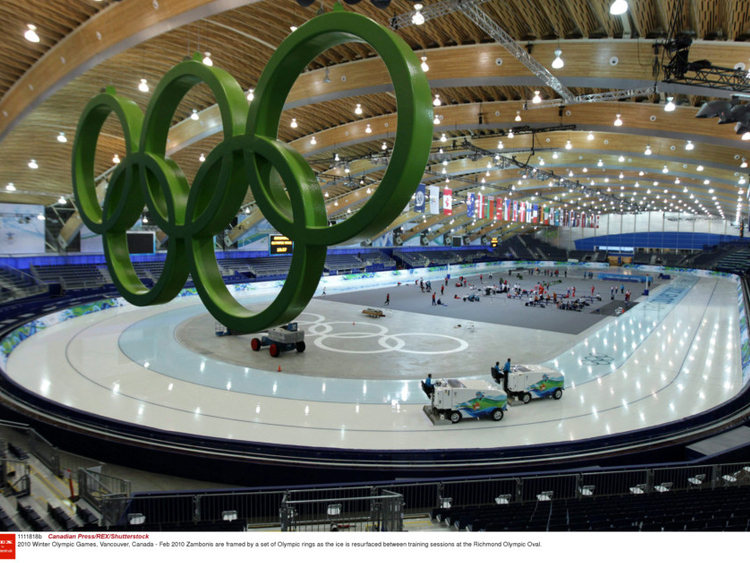PYEONGCHANG
The Winter Olympics and the Paralympic Games are all over and it was fun while it lasted but what next? The $190-million (Dh698 million) investment to build an alpine race course down the slopes of the Jeongseon Alpine Centre on Mount Gariwang in South Korea to international standards for the 16 days of competition is now drawing the attention of the environmentalists.
Under pressure from green groups, and after deciding it was economically unviable to turn the area into a permanent ski resort, Gangwon province — the local government host of the Olympics — is set to tear down the gondola and replant trees.
All that is in an effort to return the 1,560-metre mountain to its original state — including replanting tens of thousands of trees — and at a cost, a provincial spokesperson said, of 47.7 billion Korean won ($44 million).
58,000
|
The problem is the province is prepared to pay just a fraction of what is needed, and national government will not provide any funding, the spokesperson said.
That has sparked fears that the Pyeongchang Games will leave a sordid environmental legacy.
Storied history
Mount Gariwang has a storied history. In the 16th century, wild ginseng — which is revered in Korea for its healing properties — grew abundantly on its slopes, leading the Chosun Dynasty to declare the mountain off-limits to commoners.
That designation gave Gariwang the aura of a “sacred forest”, said Jeong Gyu-seok of Green Korea United, an environmental group that opposed felling trees for the ski run, and which reckons about 100,000 were chopped down for the event.
The rounded mountain’s three summit humps, with thick tree cover, are also a biodiversity hotspot.
Its upper slopes survived Japanese occupation, the Korean War and industrialisation, and are one of the few remaining old-growth forests where rare 300-year-old yew trees can be found.
$44m
|
Its geology means a cool breeze blows in summer and a warm wind in winter, keeping the soil temperature steady year-round.
“It’s a natural seed bank,” Jeong said. All of which led the government in 2006 to declare the upper third of the mountain a “protected area for forest genetic resource conservation”.
But after the International Olympic Committee (IOC) awarded the 2018 Winter Games to Pyeongchang, local organisers decided Mount Gariwang was the only place within a reasonable distance of the host city suitable for alpine ski racing events.
The key issue, reportedly, was that organisers were hamstrung by the International Ski Federation’s requirement that courses have a vertical drop of at least 800 metres.
None of the resorts around Pyeongchang met that requirement, said Pyeongchang Organising Committee spokeswoman Nancy Park.
So, how many trees were felled to build the Olympic ski run? 58,000.
Pessimistic prospects
Construction for the 2014 Sochi Games polluted waterways used by endangered Atlantic salmon, which spawn in the Black Sea.
“The loss of sacred forest in Korea is just the latest iteration of a decades-long cycle of lip-service to sustainability followed by massively negative consequences,” said sports events author Christopher Gaffney.
What has gone wrong?
The unapproved plan and limited allocation of funds leaves observers like Youn Yeo-Chang, a forest sciences professor at Seoul National University, pessimistic.
“I interpret this as an indication of weak commitment of Pyeongchang Organising Committee (under supervision of the Ministry of Culture, Sports and Tourism) and the Gangwon province,” Youn said via email.
Youn doubts full restoration is even possible.
“The vegetation in the skiing slope site has been severely damaged and there is little hope for complete restoration,” Youn said.
“First the top-soils containing humus accumulated over time were completely removed and the original conditions of soils can not be restored.” Some trees were moved off-site with the goal of replanting them after the Games, but Youn doubted they would survive.
The slow pace of progress has frustrated environmental group Green Korea United, which said a proper restoration plan would have seen seedlings planted years ago to ensure they were ready in time. Jeong Gyu-seok of the group fears restoration has become a political “ping-pong game” between the local authorities and Seou. “We would like the government and Korean citizens to learn something after the tragic artificial disaster: a budget should be allocated to repair the destruction of nature,” he said, adding that what happened on Mount Gariwang is a warning.
“The legacy of the Pyeongchang Olympics is to not repeat destroying Gariwang mountain in any other place,” Jeong said.
— Reuters














